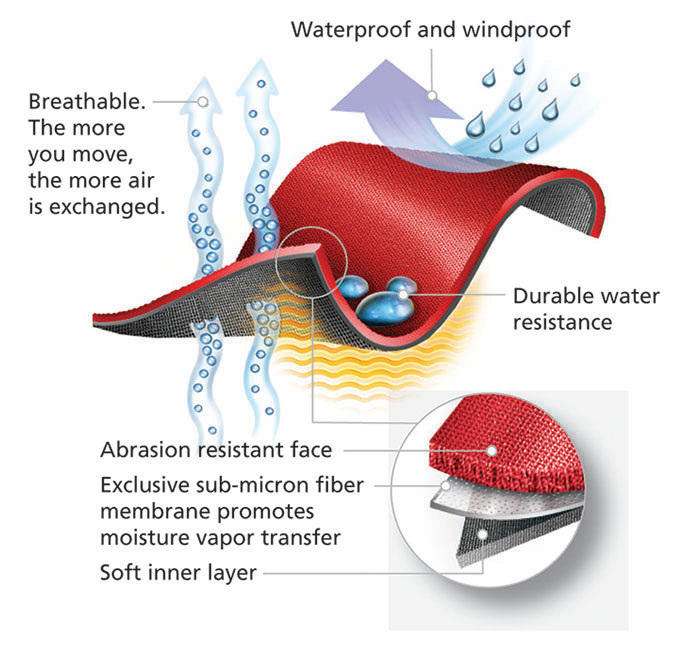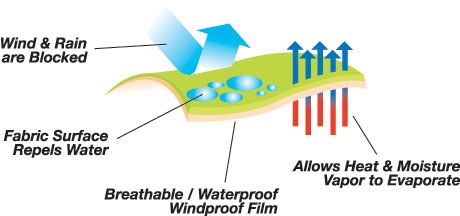

Breathability
Breathable FR garments are designed to collect and transfer perspiration out of the garment as well as allowing a measured amount of heat loss.
Breathability Standards
Of all the factors that determine physical comfort, the most basic is thermal comfort or the body's ability to manage heat. The balance between creating and losing body heat helps determine how cool an individual feels. Convection and evaporation are the body's two most important cooling methods and major contributors to comfort. For cooling to occur, heat generated by activity must be lost or dissipated through the skin and clothing.
The Polartec® Moisture Wicking System

Body Heat Loss
BODY HEAT LOSS BY CONVECTION
Convection transfers heat away from the body into the cooler atmosphere when air moves across an individual's skin or through their garments. Air movement, ventilation and wind all increase the amount of heat loss through convection.
BODY HEAT LOSS BY EVAPORATION
Evaporation is the body's most efficient cooling method of heat loss. When air is hotter than the human body, it cannot take heat away through convection, so the body perspires. When perspiration evaporates, heat is taken from the skin and body temperature is lowered.
Only breathable fabrics can take advantage of these types of heat loss. Fabrics that do not breathe adequately cause perspiration to build up inside the garment, while fabrics which absorb moisture, such as Cotton, quickly become saturated. A garment saturated with moisture clings to the skin creating a damp, uncomfortable feeling.
Breathable fabrics are designed to collect and transfer perspiration out of the garment as well as allowing a measured amount of heat loss. This leaves the worker dry from the transferred perspiration.
ASTM E96 / E96M: Standard Test Methods For Water Vapour Transmission Of Materials
Significance Of Use
The purpose of these tests is to obtain, by means of simple apparatus, reliable values of water vapour transfer through permeable and semi-permeable material, expressed in suitable units. These values are for use in design, manufacture and marketing. A permeance value obtained under one set of test conditions may not indicate the value under a different set of conditions. For this reason, the test conditions should be selected that most closely approach the conditions of use.
Breathable Rainwear
Non-breathable rainwear is designed to keep water out but also keep perspiration in. It creates an internal environment that stores heat, which leads to workers becoming wet from perspiration even when no rain has passed through. Breathable rainwear is designed to collect and transmit perspiration out of the garment. This leaves the worker dry from both transmitted perspiration and the rain.
Breathability is measured in two ways:
- Moisture Vapour Transmission Rate (MVTR), which is the amount of vapour that evaporates through the material as per ASTM E96.
- Total Heat Loss (THL), which is the ability of a material to release heat that is built up as per ASTM F1868.
For a material to be considered breathable it must:
- Have a Moisture Vapour Transmission Rate of greater than 5000 g/m2/24 hours,
- Have a Total Heat Loss of 300 watts/m2/24 hours and
- To be marketed as being breathable, rainwear must be tested according to ASTM E95 procedure BW and the result reported.
How NASCO Breathable Outerwear Functions

Leak Resistance ASTM F1891
The material being tested must withstand water pressure of 30 psig without leaking. The seams of the rainwear must not exhibit any evidence of leakage when exposed to water at 3 psig for two (2) minutes.